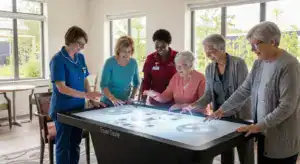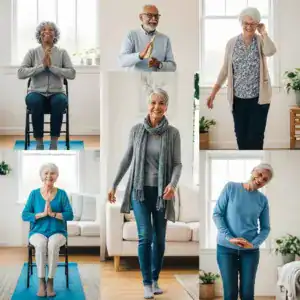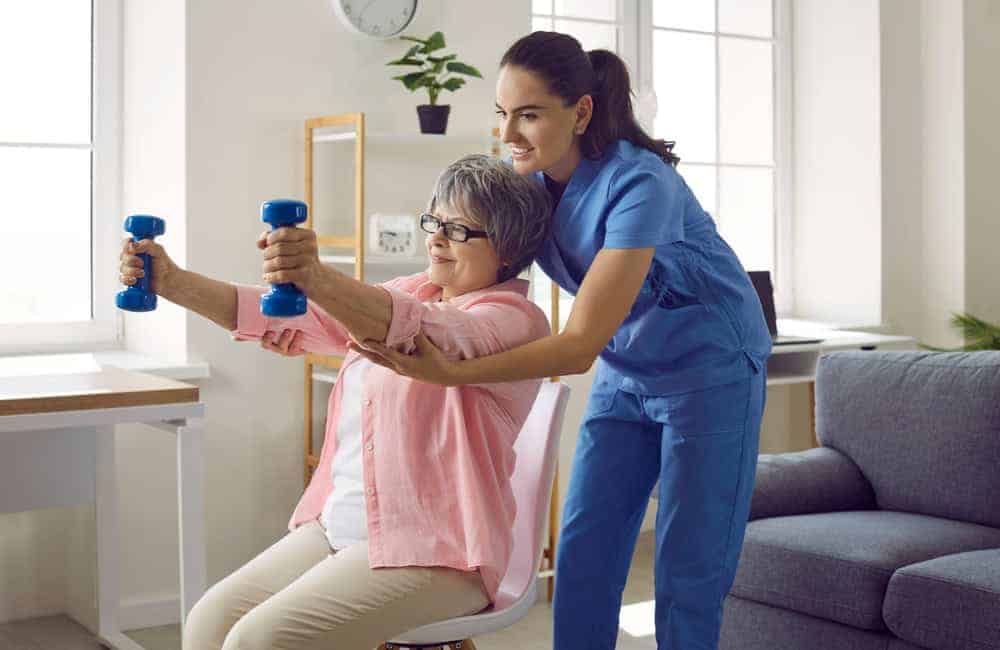
If your loved one is having mobility issues, or experiencing a chronic health condition, maintaining their independence or leading a quality life can pose a challenge.
They may find it difficult to perform simple everyday tasks like bathing or walking. They may also be prone to depending on medication for symptom relief.
Physical therapy is a common treatment for lots of injuries and health conditions. But does physical therapy work? Will it help your loved one get better? How does it even work?
This article will answer all your questions about the effectiveness of physical therapy, and tips for maximizing its benefits.
Let’s get started.
Understanding Physical Therapy
Physical therapy (PT) is a treatment that helps your body perform physical movements. Physical therapy can improve or restore your bodily function and mobility if you have been affected by injuries, illnesses, or other health conditions.
Physical therapy is non-invasive and is a long-term solution for various conditions like post-surgery rehabilitation, arthritis, osteoporosis, and neurological conditions like Parkinson’s disease.
Physical therapists perform physical therapy and use various techniques such as exercise, massage, and manual therapy to restore function.
Benefits for Seniors
As we get older, we begin to lose our physical abilities. Factors such as muscle atrophy, injuries, or medical conditions can limit physical functioning.
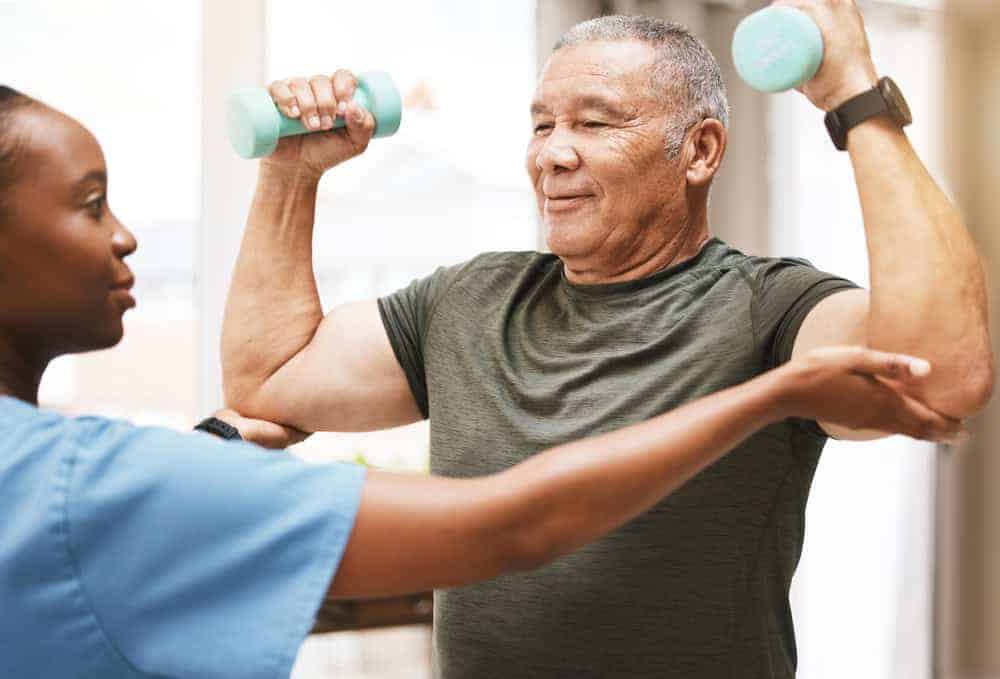
Physical therapy is beneficial for seniors as it can help them retain independence. Here are some ways physical therapy benefits your elderly loved one.
- Pain management: Chronic pain from injuries such as knee pain, surgery, or health conditions can be difficult to manage. However, utilizing physical therapy can help manage pain. A physical therapist uses various techniques such as exercises, stretches, and manual therapy to reduce pain and improve mobility.
- Improved Balance and Fall Prevention: Physical therapy focuses on exercises that enhance balance and coordination, reducing the likelihood of falls and related injuries. This is crucial for seniors who are at a higher risk of falling due to age-related changes in strength and balance.
- Enhanced Mobility and Flexibility: Regular physical therapy can improve joint flexibility and muscle strength, making it easier for seniors to perform daily activities such as walking, dressing, and bathing. This helps maintain their independence and quality of life.
- Recovery from Surgery or Injury: After surgeries such as joint replacements or other medical procedures, physical therapy aids in faster recovery by promoting healing and restoring function. It also helps in reducing post-surgical pain and preventing complications.
- Management of Chronic Conditions: Physical therapy can be tailored to manage chronic conditions like arthritis, osteoporosis, and cardiovascular diseases. Through specific exercises and treatments, it helps in reducing symptoms, improving function, and enhancing overall well-being.
Does Physical Therapy Work?
There’s concrete clinical evidence on the effectiveness of physical therapy on older adults. Whether it’s managing pain, symptoms of chronic conditions, or improving mobility, many seniors have transformed their lives with physical therapy services.
Ailments Treated by Physical Therapy
Here are some common ailments treated by physical therapy. Your loved one may need physical therapy if they have any of the following.
1. Arthritis: Physical therapy helps manage arthritis by reducing pain and making joints more flexible through special exercises and joint movement techniques.
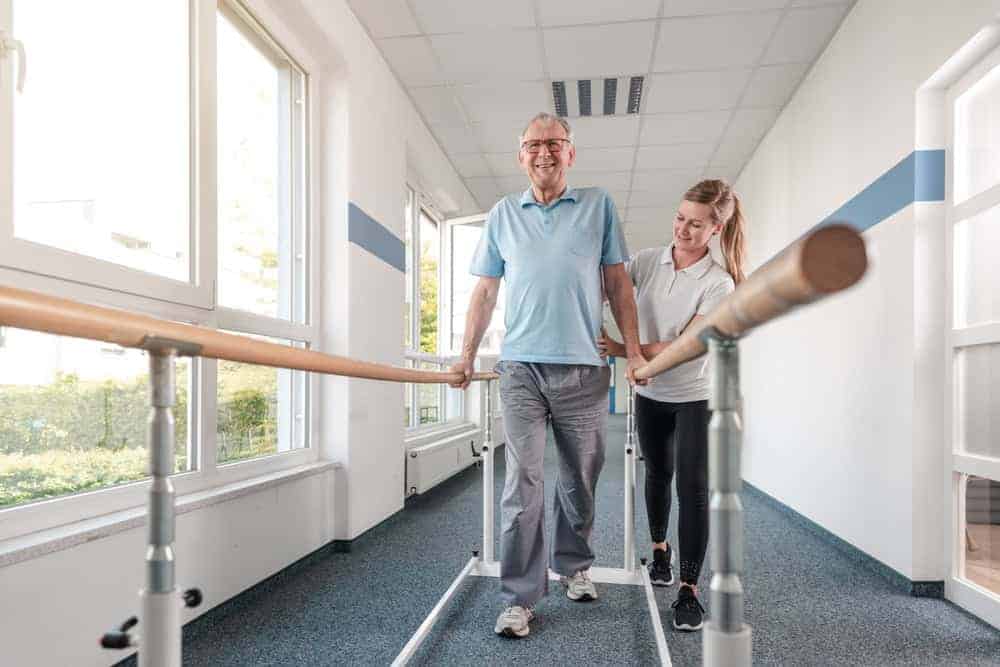
2. Osteoporosis: Physical therapists use weight-bearing exercises to make bones stronger, which helps prevent fractures and keeps bones healthy.
3. Stroke Rehabilitation: After a stroke, physical therapy helps regain movement, improve balance, and increase independence by working on motor skills.
4. Parkinson’s Disease: Physical therapy for Parkinson’s includes exercises to improve walking, balance, and coordination, helping manage symptoms and maintain abilities.
5. Hip and Knee Replacements: After joint replacement surgeries, physical therapy is crucial for restoring movement, reducing pain, and strengthening the muscles around the new joint.
6. Chronic Pain: Conditions like lower back pain and fibromyalgia are managed through physical therapy with exercises, manual therapy, and treatments like heat or cold therapy to reduce pain.
7. Cardiopulmonary Conditions: For seniors with heart and lung problems, physical therapy includes exercises to improve heart and lung health, breathing techniques, and endurance training.
8. Balance Disorders: Physical therapy can help seniors with balance problems by using exercises that improve stability and coordination, reducing the risk of falls.
Research-Backed Evidence on the Effectiveness of Physical Therapy
This study showed that manual therapy when combined with a supervised exercise protocol over a 2-4 weeks period was effective in managing pain intensity and functional disability in patients with knee osteoarthritis.
A UCLA-led study found that many stroke patients don’t get enough rehab therapy, even though more therapy can greatly reduce long-term disability. The study tracked over 500 patients in 28 hospitals during their first year after a stroke. Research has found that stroke patients who undergo physical therapy regain better mobility and independence compared to those who don’t receive therapy.
A systematic review of 2940 studies on the effectiveness of physical therapy on Parkinson’s disease showed that long-term physiotherapy had a beneficial impact on motor symptoms, and could reduce antiparkinsonian medication dose in PD patients. Additionally, 2.5 hours a week of physical activity can slow down the progression of PD.
If you or a loved one has been diagnosed with osteoporosis, you may not be able to rebuild bone, but with physical therapy, you can prevent bone fractures and the progression of the disease.
In a 2020 study, researchers found that a 12-week program supervised by physical therapists for women with osteoporosis helped improve balance, muscle strength, and fear of falling. In addition, regular physical exercise decreases the risk of osteoporosis in postmenopausal women.
How Physical Therapy Works
Wondering how physical therapy works to improve physical functioning? Let’s take a look at the steps and techniques involved.
Factors That Make Physical Therapy Effective
Physical therapy is rooted in principles and scientific-based practice. Physical therapists are trained to help you restore your physical function. For your program to be effective, your therapist would take the following steps.
Initial Assessment
Your loved one’s physical therapist would assess their condition limitations, and goals. This involves evaluating your loved one’s range of motion, balance and coordination, strength, and pain levels while considering their medical history.
Personalized Treatment Plan

Based on the assessment, a custom treatment plan is developed to address your loved one’s specific issues. This could be reducing pain, or improving function.
No two treatment plans are the same in physical therapy, as each patient has unique goals and preferences.
Ongoing Monitoring and Evaluation
Throughout the program, the therapist continuously monitors progress through regular evaluations, ensuring the treatment is effective and making necessary adjustments.
There must be open communication between the therapist and your loved one. This allows for real-time feedback, ensuring your loved one’s comfort and addressing any concerns promptly.
Use of Advanced Techniques and Equipment
Utilizing the latest technology, such as electrical stimulation, ultrasound, and specialized exercise equipment, enhances the effectiveness of the therapy.
Patient Education and Self-Management
Physical therapists don’t stop at providing treatments, they also educate your loved one on exercises and techniques they can perform at home to support their recovery. This allows patients to take an active role in their recovery, leading to better outcomes.
Different Techniques and Approaches Used in Physical Therapy
Depending on your condition or that of your loved one, your physical therapist would use a combination of techniques to improve or restore function. Techniques such as:
Exercises
This is the most common treatment in physical therapy. Different exercises are performed to strengthen your body and improve your functioning. The type of exercises utilized will depend on what symptom or condition is being treated.

Exercises include:
- Strength exercises focus on building muscle to improve overall strength and function
- Flexibility exercises aim to increase muscle and joint flexibility, enhancing range of motion
- Functional mobility exercises simulate daily activities to improve balance, coordination, and movement efficiency
- Exercises to improve your range of motion target specific joints to increase their ability to move freely.
- Exercises for vertigo and dizziness aim to improve balance and reduce symptoms of vertigo and dizziness through specific movements and techniques.
- Cardiorespiratory exercises increase heart rate and improve lung function for better overall cardiovascular health.
Massage
Massage therapy in physical therapy involves the manipulation of soft tissues to promote relaxation, reduce muscle tension, and improve circulation. The type of massage used will depend on the level of pain and stage of your healing.
Types include:
- Swedish Massage: Uses kneading, circular movements, and long strokes to improve circulation, and relax muscles.
- Deep Tissue Massage: Focuses on deeper muscle layers and connective tissue to relieve persistent muscle tension and adhesions.
- Trigger Point Therapy: Targets specific areas of muscle tension to reduce pain and enhance flexibility.
- Myofascial Release: Addresses the fascia (connective tissue) to relieve tension and improve mobility.
Therapeutic Modalities
Some modalities your therapist may use depending on your condition include:
- Heat Therapy: Uses heat to increase blood flow, relax muscles, and alleviate pain.
- Cold Therapy: Reduces inflammation and numbs painful areas by applying cold packs or ice.
- Ultrasound: Uses high-frequency sound waves to promote tissue healing and reduce pain.
- Electrical Stimulation: Uses electrical currents to reduce pain, promote muscle contractions, and enhance healing.
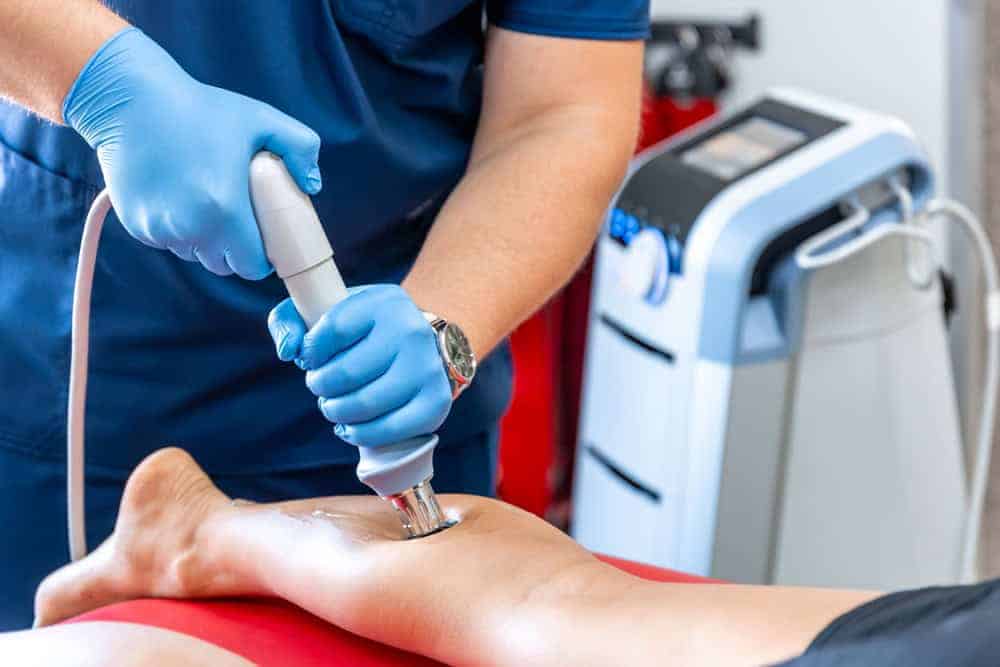
- TENS (Transcutaneous Electrical Nerve Stimulation): Provides pain relief by sending electrical impulses through electrodes placed on the skin.
- Iontophoresis: Uses a mild electric current to deliver medication through the skin to reduce inflammation and pain.
How Do You Know Physical Therapy is Working
Various signs of progress that indicate your physical therapy program is effective. Keep in mind that is not a standard, and can vary from person to person.
A typical physical therapy timeline includes:
Within 2 weeks to 1 month:
- Pain Reduction: Your loved one may experience less pain during daily activities or specific movements.
- Improved Range of Motion: You might notice increased flexibility and easier movement in affected joints.
1 month to 3 months:
- Increased Strength: Muscles may become stronger, allowing your beloved senior to perform tasks with less effort.
- Enhanced Mobility: Improved ability to walk, climb stairs, or participate in recreational activities.
- Reduced reliance on pain medications: As pain reduces, and functionality increases, your loved one may not have to take as many pain medications. This can eliminate the side effects from medications, and enhance overall quality of life.
Long Term (Several Months and Years):
- Sustained Improvement: Continued pain relief and maintenance of mobility gains.
- Functional Independence: Being able to perform daily activities independently and with confidence.
The goal of your physical therapy program shouldn’t be to reduce pain in the short term but to restore independence and lead a better quality of life.
Working with a Physical Therapist
While physical therapy works, your therapist is instrumental in whether physical therapy will be effective for you.
This is to say that choosing a qualified and licensed physical therapist ensures you receive expert care tailored to your specific needs. They have the training to accurately assess your condition and develop effective treatment plans.
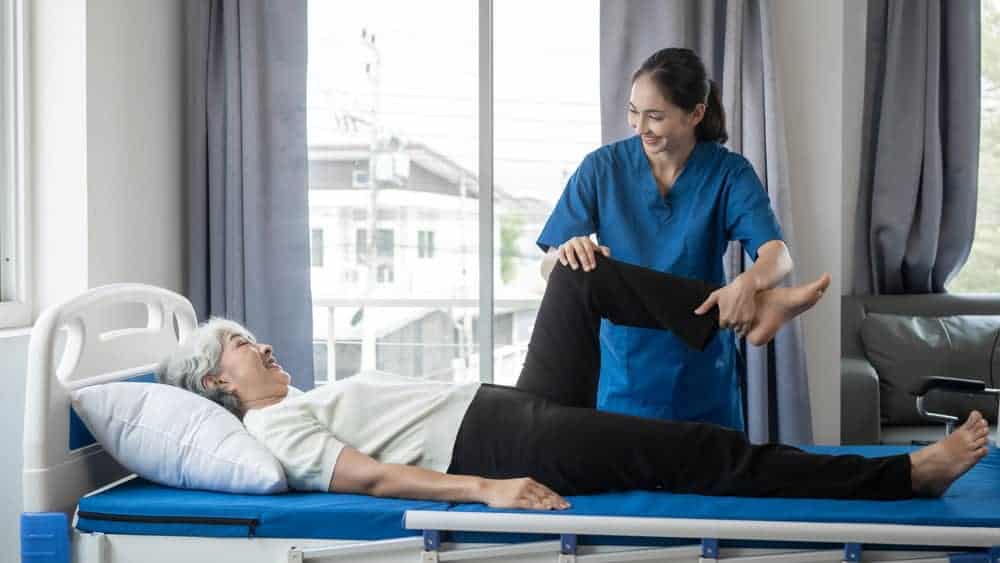
Factors to Consider When Choosing a Physical Therapist for Your Loved One
Choosing the right physical therapist is essential for effective treatment and recovery. Consider these factors:
- Qualifications and Credentials: Ensure the therapist is licensed and has certifications in your specific area of need.
- Experience and Specialization: Look for experience treating conditions similar to yours, whether it’s orthopedic issues or neurological rehabilitation.
- Communication and Approachability: A therapist who listens to your concerns, explains treatments clearly, and involves you in decision-making enhances your therapy experience.
- Location and Convenience: Choose a clinic that is accessible and convenient for regular appointments.
- Patient Reviews and Recommendations: Check reviews and ask for recommendations from healthcare providers or friends who have had positive experiences.
- Insurance Coverage: Confirm that the therapist accepts your insurance plan or offers payment options that fit your budget.
What to Expect During a Physical Therapy Session

During sessions, your therapist will conduct assessments, guide you through exercises and stretches, and may use modalities like heat or ultrasound for pain relief. They monitor your progress closely and adjust treatments to maximize effectiveness.
Tips for Maximizing the Benefits of Physical Therapy
To get the best results from your physiotherapy program, you should:
- Follow Your Therapist’s Instructions: Complete exercises and activities as prescribed by your therapist. They are the experts and know what techniques will work best for you.
- Communicate Openly: Share any concerns or changes in your condition with your therapist. For instance, if feel a certain way during exercises, or think you’re not seeing results from some techniques.
- Stay Consistent: Attend all scheduled sessions and follow through with exercises at home to ensure a speedy recovery.
- Maintain a Positive Attitude: A positive mindset can enhance your motivation and overall progress in therapy. Some days may be more difficult than others; it may look as it if not working, however, stay positive.
Your Takeaway
Physical therapy works. It has been proven to be effective for treating ailments such as arthritis, osteoporosis, stroke rehab, Parkinson’s, and other conditions.
However, the effectiveness of your program is hinged on your therapist. Therefore it’s essential to choose a therapist who is qualified and has experience with your condition.
To get the most out of therapy, stay consistent, follow your therapist’s instructions, and maintain a positive attitude.
If you are looking for a licensed therapist in Reno, Carson City, and the surrounding areas, Amy’s Eden liaises with qualified physical therapists to provide exceptional services for our clients. This could be in your home, one of our assisted homes, or in the therapist’s office.
Reach out to us today to learn more about how we can guide you in finding the right physical therapist for you or your loved one.


